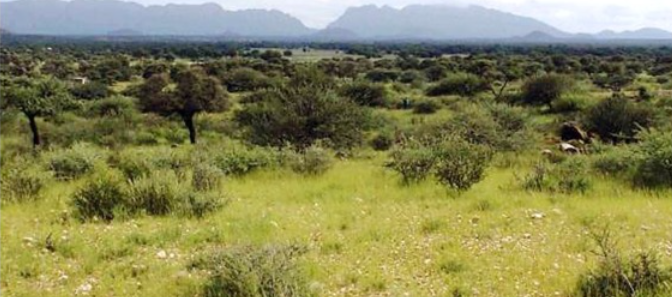Again Reality Goes In Opposite Direction Of Climate Models…”Confidence In Models Correspondingly Low”
Again Reality Goes In Opposite Direction Of Climate Models…”Confidence In Models Correspondingly Low”
====================================================
Southern Africa vegetation expanding, images show. Source: here.
Real vegetation development in southern Africa takes a very different course than claimed by climate models
By Die kalte Sonne
(German translated by P Gosselin)
Climate models provide answers to all conceivable questions about the future. Political decision-makers are grateful for this information because they can make their plans accordingly.
But are the forecasts derived from models correct at all?
A research team led by Timm Hoffman has now compared the model projections with real vegetation development in southern Africa using historical photos. The sobering result: Nature has mostly developed quite differently than assumed by the models. In contrast to the model assumptions, no significant long-term trend in precipitation could be observed. Vegetation belts, which were supposed to shrink, ended up expanding. Confidence in the models is correspondingly low.
Political planning or even CO2 damage calculations based on the simulations are not possible. Here is the abstract of the work published in the journal Anthropocene in March 2019:
Rethinking catastrophe? Historical trajectories and modelled future vegetation change in southern Africa
Most projections of climate change for southern Africa describe a hotter and drier future with catastrophic consequences for the environment and socio-ecological sustainability of the region. This study investigated whether evidence of the projections for the climate and vegetation of the subcontinent is already evident. Analysis of the climate record indicate that the historical trend of increasing temperature is consistent with future projections for the region. Rainfall, however, apparently has not changed significantly. Results from analysis of 1321 repeat historical photographs indicate broad trends in vegetation trajectories in the major biomes of southern Africa. The Savanna biome has experienced a rapid increase in woody plant at rates un-anticipated by the models. Contrary to early projections for the Succulent Karoo biome, biomass and cover have increased, largely in response to changes in land-use practices. Cover in the fire-adapted Fynbos biome has remained stable or increased over time with unanticipated expansion of forest species, particularly in localities protected from fire for long periods. The shrub-dominated Nama-karoo biome has increased in grass cover. Rather than contracting, as suggested in the early models, the Grassland biome has apparently expanded westwards into former Nama-karoo biome sites. The Savanna biome has experienced a rapid increase in woody plants at rates not anticipated by the models. The broad trends in historical trajectories illustrate how land-use management has influenced vegetation change in the past. They also provide a useful context for evaluating future changes and developing mitigation strategies for some of the worst impacts of climate change in the future.”



